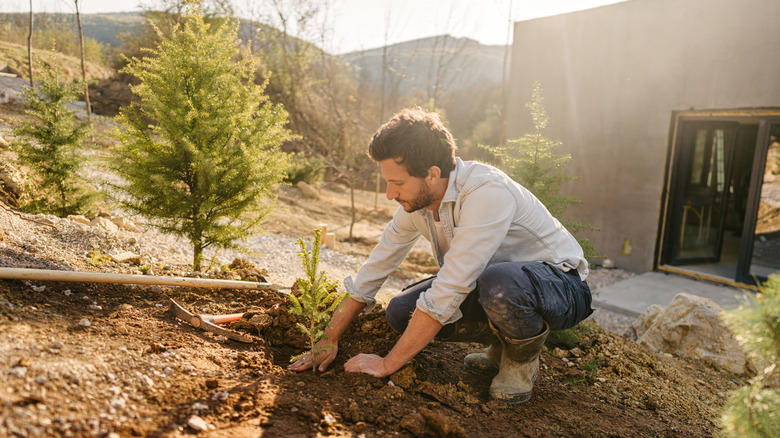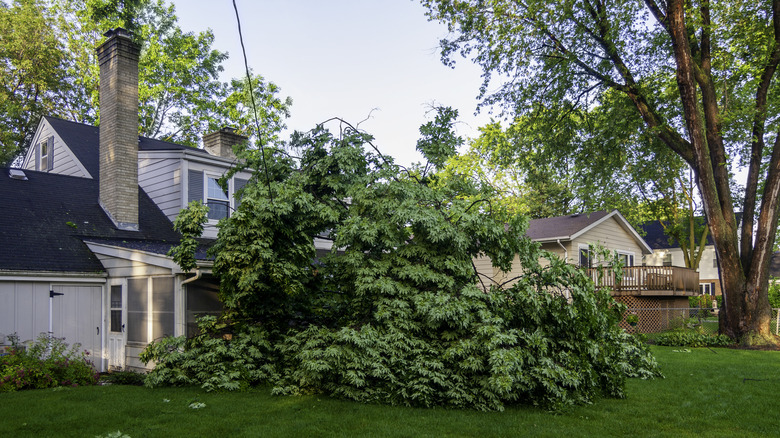Is The Tree You Just Planted Far Enough Away From Your Home?
Planting trees near your house has many benefits: They're beautiful, offer practical benefits like shade, and create habitats for local wildlife. Still, there's such a thing as too close to home. If you just planted a tree right next to your house, you may need to take steps to move it away.
A tree too close to your house can create a number of problems. If its branches grow to overhang the roof, you'll have lots of gutter cleanup, as well as risks from fallen branches. If its roots start to reach beneath the foundation, they can do significant damage. A tree's roots can grow to the same width as its canopy. So, if it's hanging over your roof, there's a good chance the roots are already threatening your home's foundation. Also, if a storm takes the whole tree down, it could land on your house and cause severe issues.
Just planted a tree? Start by researching what size it is likely to reach. This will help you decide whether or not to move it. Placing the tree the same distance away from your house as the tree's eventual height is a near-certain way to prevent all these hazards. At a minimum, a tree should be at least as far from your house as half of its mature canopy spread.
Other factors in tree placement
In addition to home damage, there are other factors on your property that might impact where you plant a new tree. If you're using it for shade, for privacy, or as a windbreak, you may have good reasons for wanting it nearby.
Still, be sure to consider that a shade tree will be more or less effective depending on how close to the house you place it. In most locations, the shade will reach farther in winter (when the sun is lower) than in summer. As a general rule, shade trees work best when planted about 15 to 20 feet from your home.
Also, keep in mind that smaller trees are safer near your home. If you need trees close by for privacy or other reasons, make sure to research how big the species will get and choose a smaller one. Super-tall trees are lovely — just not if they're too close.
Finally, consider the other parts of your home that a tree may interfere with. Branches can tangle in above-ground wiring, while roots can damage septic tanks, pipes, and driveways. Even other trees can get in the way when planted too close together.
How to safely move a tree
Moving a planted tree may not be easy; but, if it's the wrong distance from the house, it's better to take care of the issue now than later. With a little effort, you'll avoid the many hassles that can come from a tree too close to your house.
The smaller the tree, the more easily you can move it. However, you'll want to do so carefully, so you don't damage the tree in the process.
First, make sure to time the transplant for late fall (after the leaves are on the ground) or early spring (before the buds break). However, in the fall, be sure the roots will have time to grow before the soil's frozen. Choose your time early. You'll need to prune your tree's roots a few months before you actually move it, to get new "feeder roots" to grow, so your tree will thrive.
One day prior to transplant day, give the tree a healthy dose of water. Then, on transplant day, dig up your tree to find the size of the root ball. The new hole should be just as deep but three to five times wider than the root ball, allowing for new root growth.Wrap the root ball in burlap or plastic for safe transport, and gently move it to its new location a safe distance from your home.


